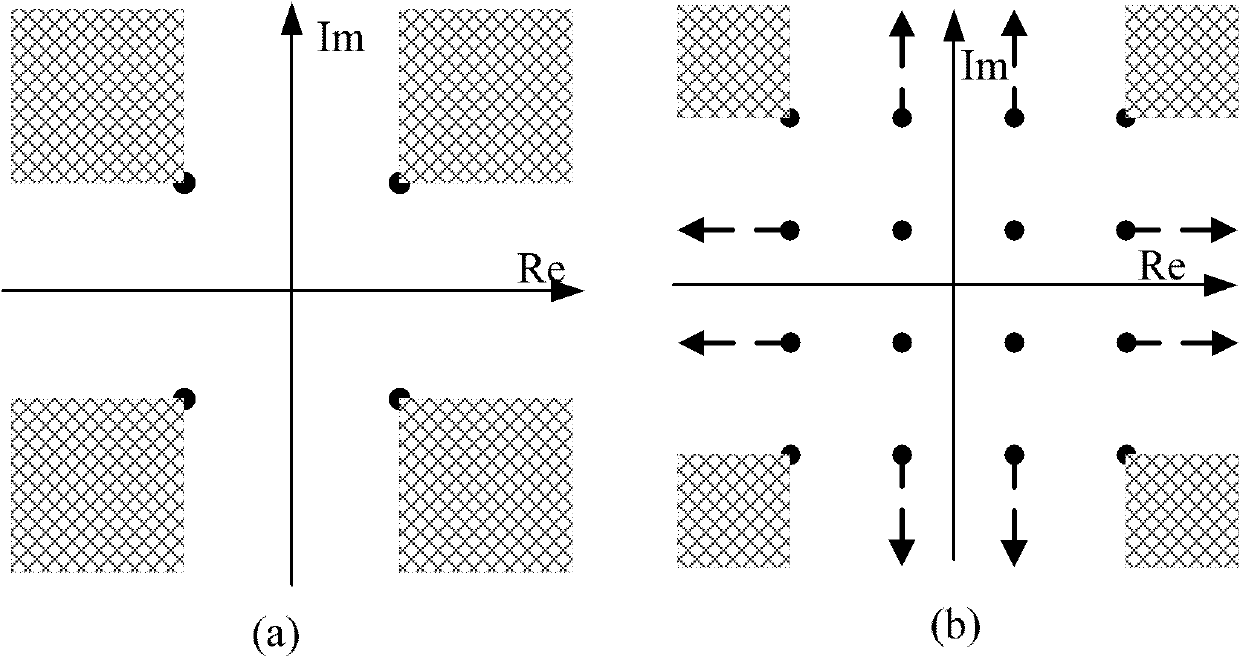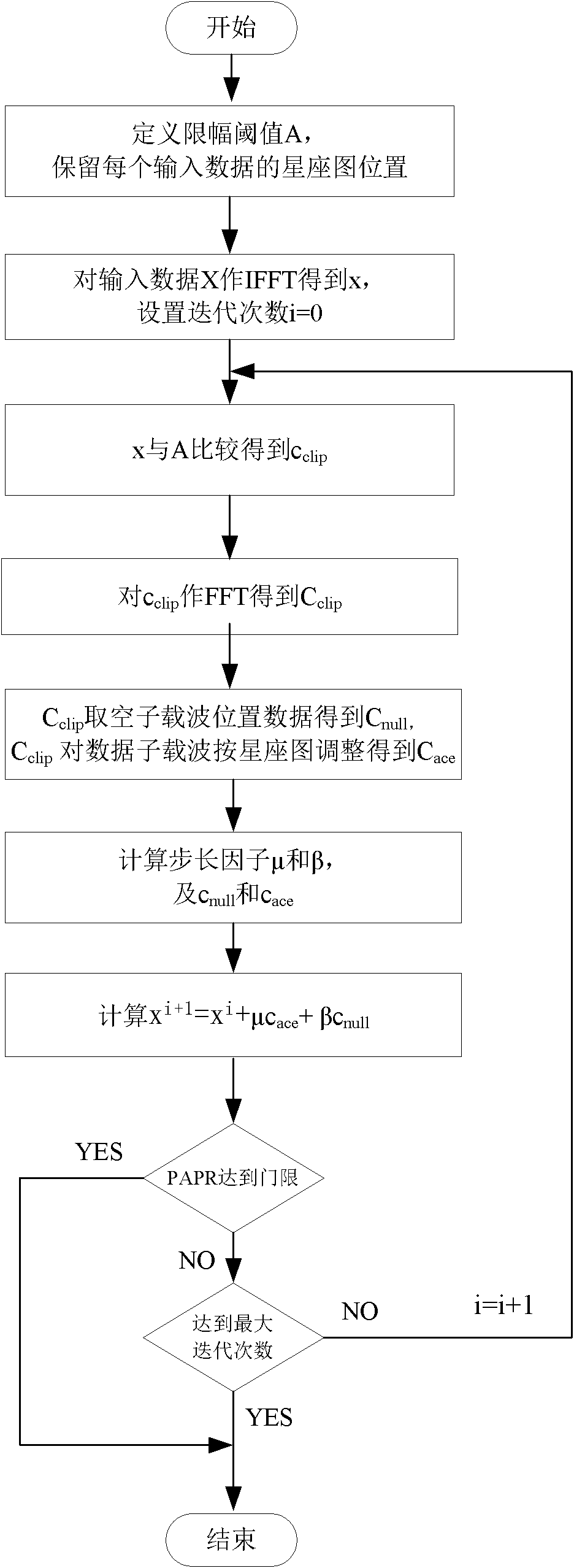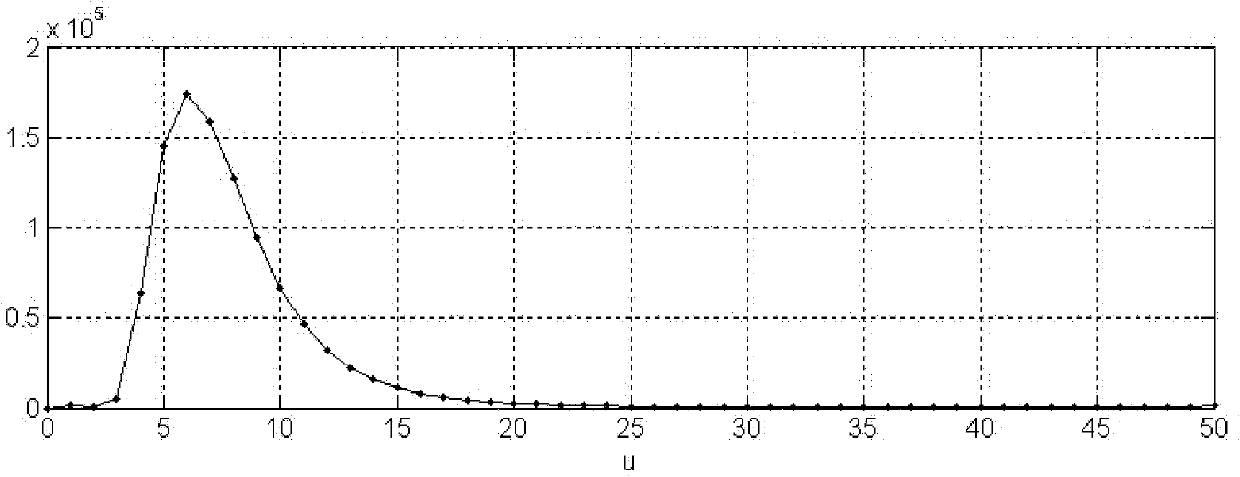Signal peak-to-average ratio reduction method for orthogonal frequency division multiplexing (OFDM) system
A signal peak-to-average ratio and orthogonal frequency division technology, which is applied in the field of wireless communication technology, can solve problems such as low peak-to-average ratio, and achieve the effect of reducing peak-to-average ratio and reducing the number of iterations
- Summary
- Abstract
- Description
- Claims
- Application Information
AI Technical Summary
Problems solved by technology
Method used
Image
Examples
Embodiment Construction
[0026] In the following, the method for extending the constellation diagram will be briefly introduced first, and then the present invention will be described in detail.
[0027] Constellation Diagram Expansion
[0028] Constellation extension method ACE is a non-bijective constellation mapping algorithm. Its basic principle is to reduce the peak-to-average ratio by changing the position of points on the constellation diagram. The general constellation mapping is to map certain bits into certain fixed points on the constellation diagram, while the constellation expansion method allows certain constellation points to be mapped to a specific area. figure 1 It is the constellation map mapping method of QPSK and 16QAM, that is, to adjust the points on the periphery of the constellation map to the direction away from other constellation points. The mathematical expression of the ACE algorithm is
[0029]
[0030] in
[0031] x ‾ ...
PUM
 Login to View More
Login to View More Abstract
Description
Claims
Application Information
 Login to View More
Login to View More - R&D
- Intellectual Property
- Life Sciences
- Materials
- Tech Scout
- Unparalleled Data Quality
- Higher Quality Content
- 60% Fewer Hallucinations
Browse by: Latest US Patents, China's latest patents, Technical Efficacy Thesaurus, Application Domain, Technology Topic, Popular Technical Reports.
© 2025 PatSnap. All rights reserved.Legal|Privacy policy|Modern Slavery Act Transparency Statement|Sitemap|About US| Contact US: help@patsnap.com



